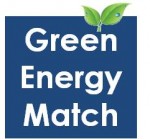
Before you bought your home or rented an apartment, did you consider how green is your community? Chances are you haven’t. Most people don’t. Not only majority of folks have no clue as to what a “sustainable” community really is but for years, there has not been much need for it. Today, however, we’re much more aware of our carbon paw prints, wasteful lifestyles and the ever growing need to just simply connect with people around us. Fact is, sustainability of the community is becoming a huge factor when choosing a place to plant our roots for the future.
So what is a sustainable community? After looking at many definitions, perhaps the UK Sustainable Communities Plan defines it best: “Sustainable communities are places where people want to live and work, now and in the future. They meet the diverse needs of existing and future residents, are sensitive to their environment, and contribute to a high quality of life. They are safe and inclusive, well planned, and offer equality of opportunity and good services for all.” Ahhh… the English, they do get some things right, don’t they?
So ideally, a true gage of sustainability is where the environment prospers along with the people who are living in it. In order words, the housing developments must be incorporated in the natural environment already present on the ground and not the other way around which was much too common years ago.
Such an idealistic concept as community living in harmony with the environment and local ecosystems may sound far fetched but its not. In fact, one such example in Bay Area is The Prospects Community in Pacifica. They are developing 29 LEED certified, unique homes that will create a new model of community and environmental responsibility. Homes will feature strategic positioning of houses for passive solar gain, solar electricity, electric car allowances with each house, sustainable landscaping with grey water irrigation, community gardens and many other super cool eco-friendly features. Gosh, just hearing all that may give us greenies goose bumps.
Such communities in San Jose area maybe as common as dinosaurs in Santa Cruz Mountains. This is mainly because of our density laws and scarcity of land to build on. The kingdom is not all lost though. We can still make changes to live more in harmony with nature and take advantage of its renewable resources to heat or cool our homes. We just have to do it differently.
If we can’t green our communities from outside-in, it’s time to green them from inside-out. J With time, most of us will integrate some of the eco features available at The Prospects Community in our homes. If we make this is our mission as a community and all get involved in whatever way possible, the future of sustainability may be here sooner than we can imagine.
For now, simply start being aware of the simple fact – sustainability of the community is going to be a major factor when choosing a place to live in the future. This “green” factor is going to affect home prices, apartment rents and overall desirability of the neighborhood.
Key elements to consider besides the obvious ones like affordability, street noise, nearby prisons and so on:
- How long will you need to commute to work? Commute for most people is time spent away from the family. Burning fossil fuels to drive around is not so fun either.
- Are the streets walkable and can you ride a bike to your friend’s house a few blocks down? Can your kids safely ride a bike to school or a nearby park? San Jose is actively engaged in providing more bike trails so the sooner the better!
- What pollutants contribute to the air quality of your neighborhood? Is there a factory near by? Are prevailing winds carrying toxic particles your way? What are the common allergies from local vegetation?
- How far is a local farmers market? Eating locally grown foods is a great contribution to the environment and local economy. If your Safeway is five times closer than your farmers market, always reaching for that local produce maybe a great source of internal agony.
- What public transportation is available? If your vehicle broke down or you forgot to charge your electric car would you be able to take a bus or train to your job site? Wouldn’t it be nice to just hop on the bus with a whole grain bagel in your teeth and newspaper in the hands?
If you want to have some fun, then check out a walkability score of your neighborhood. The walkability score is ranging from 1-100. The higher the score the better the walkability of your location. For example my score is 34 which sadly, is totally car dependable. Try yours and see what you get: www.walkscore.com
Next time you find yourself looking for a new home, make sure you consider the green aspects of the community. Not only this will affect your quality of life, it will affect your impact on the environment. And if you’ve settled in your home already for many years to come, then do all you can to embrace sustainability from inside-out. Every bit counts. Every step matters.

 What Flame Retardants Have to do With Your Prospects to Reproduce?
What Flame Retardants Have to do With Your Prospects to Reproduce? The Heck with Climate Scientists, the Heck with the Nae Sayers, and One Huge Reason We Must Care Anyways
The Heck with Climate Scientists, the Heck with the Nae Sayers, and One Huge Reason We Must Care Anyways Announcing: Green Energy Match – We’re So Close!
Announcing: Green Energy Match – We’re So Close!
In Seattle we have several Built Green Certified communities and lots of homes independent of a community. I intentionally moved to a Built Green community because of the many benefits of healthy housing and a walkable neighborhood! wwwTheHighPoint.com
Yes Wendy, you truly live in the green home heaven 🙂 It’s picking up here in Bay area also but slow… some day you’ll have to come visit and check it out yourself.
It still amazes me when people dismiss green living. As though it’s a myth. They continue to go on living by eating small prepackaged manufactured foods that they heat up in the microwave. It’s sad. That said, I still don’t understand how people can drive a Toyota Prius when it’s been proven to be LESS environmentally friendly than a Jeep Wrangler. Afterall, fuel consumption and emissions are only part of the green equation.